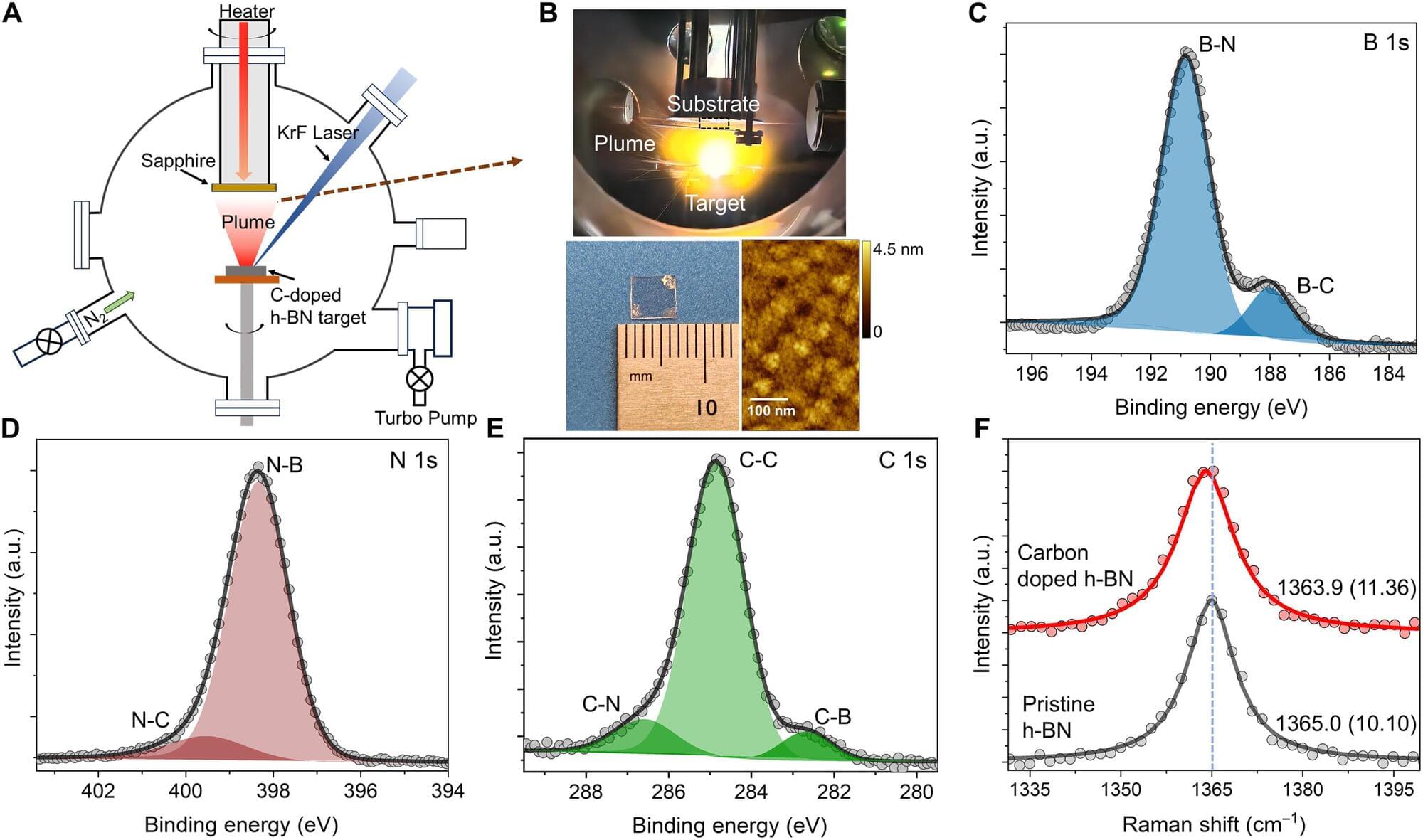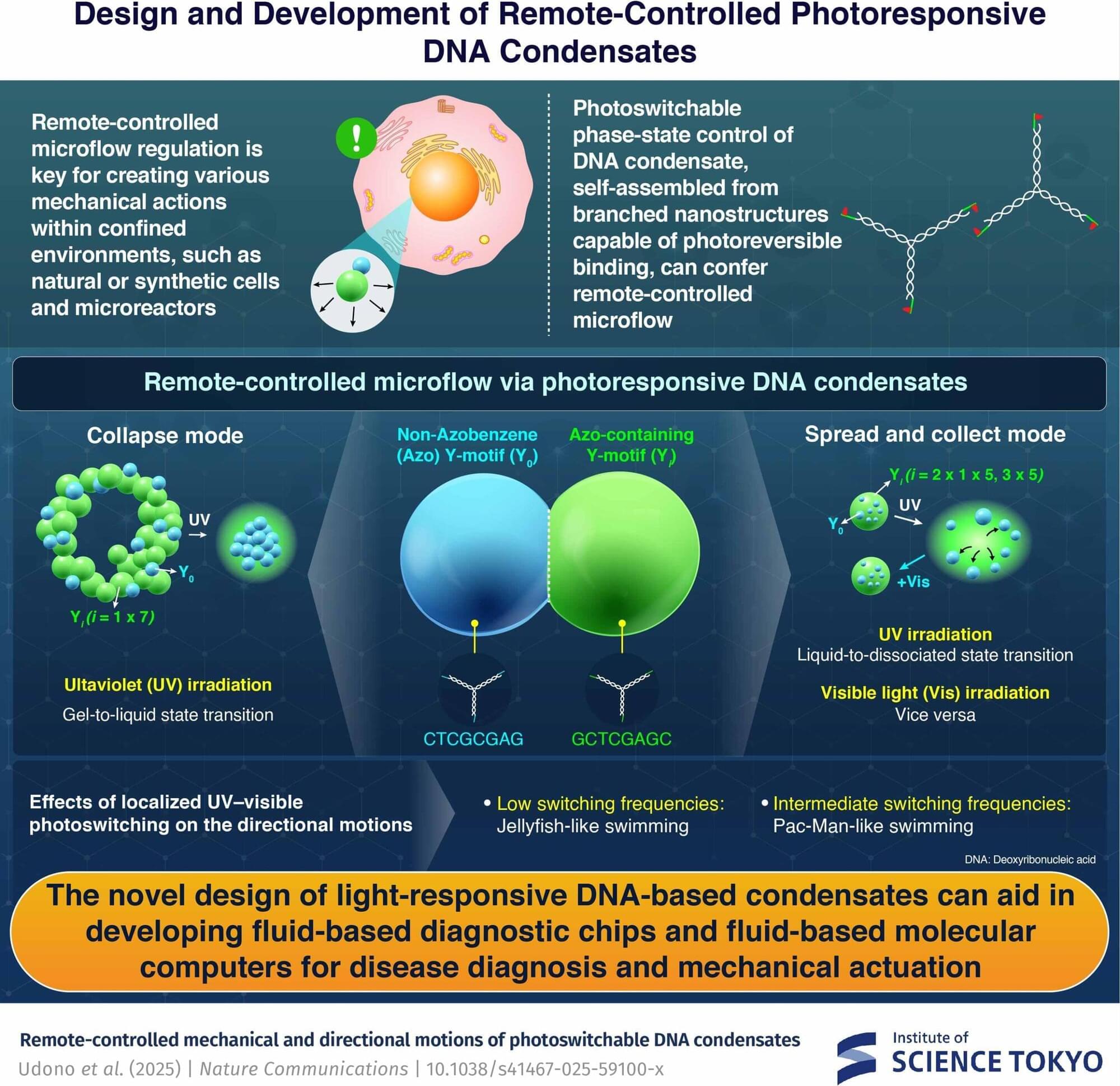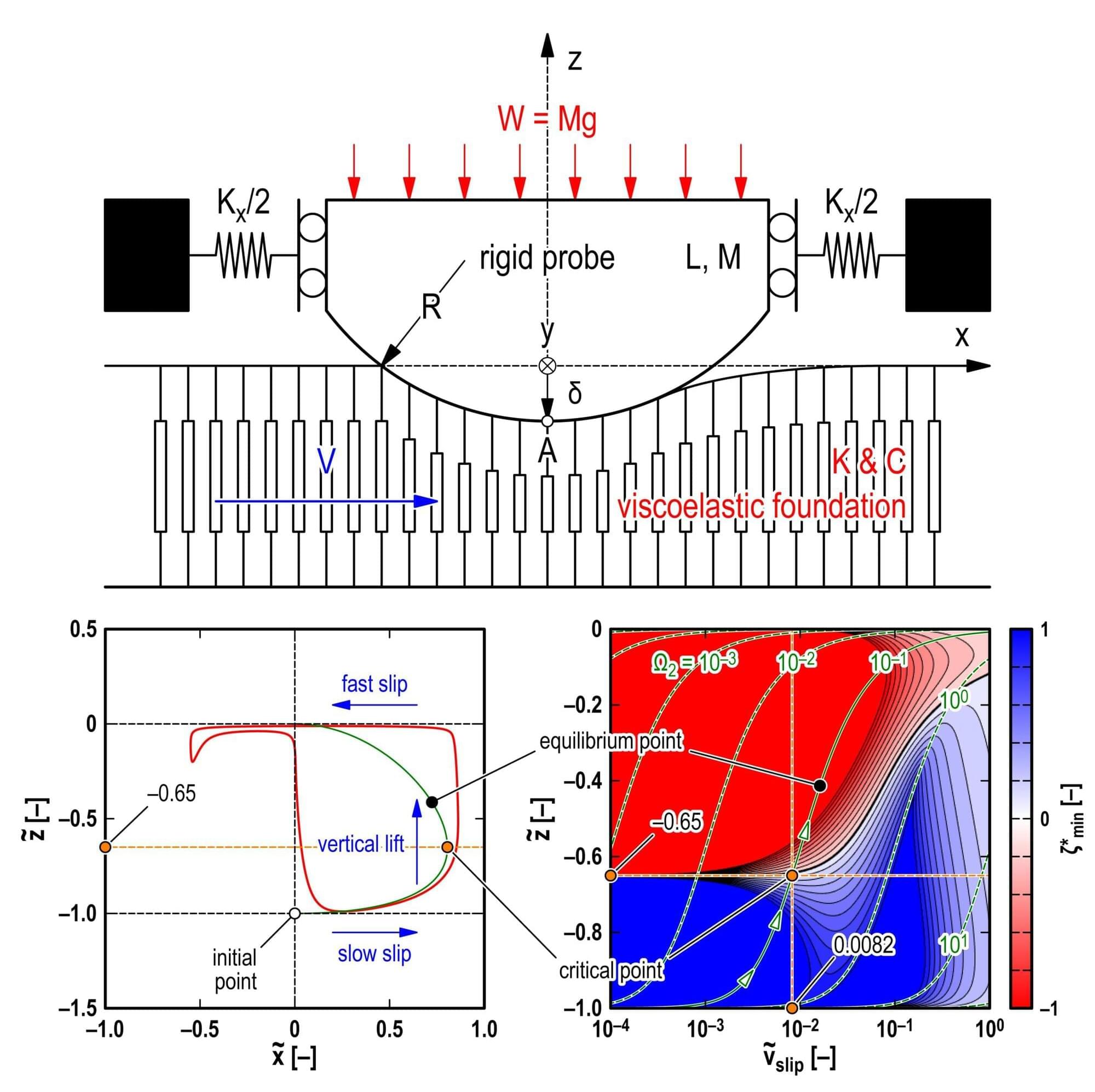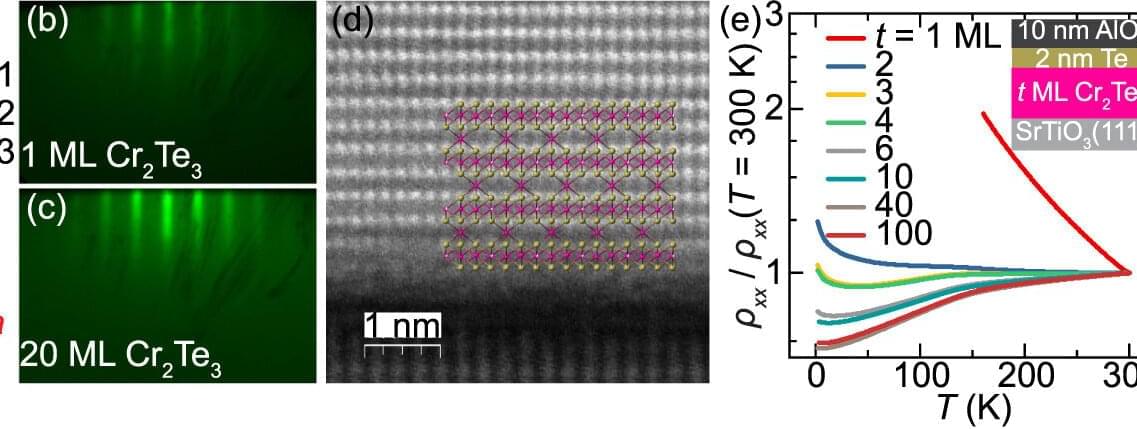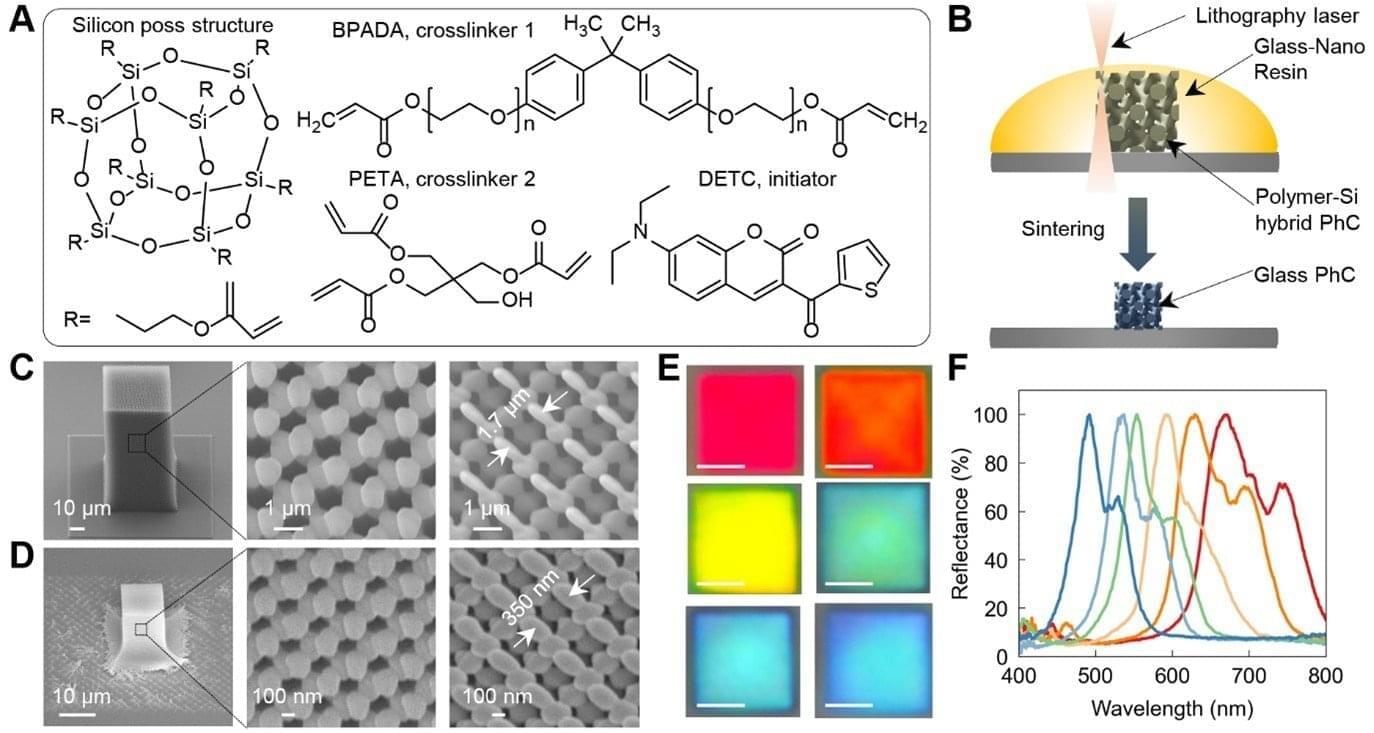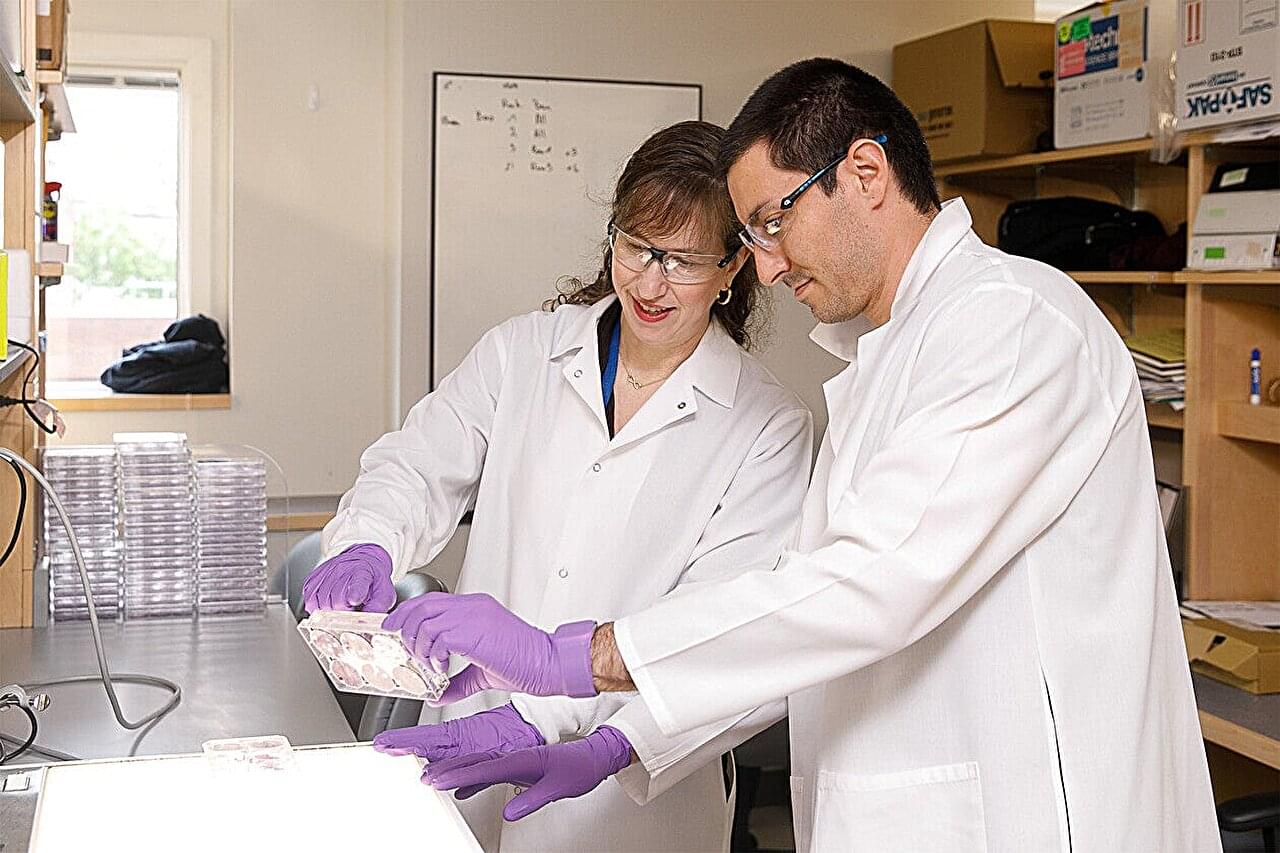Scientists across the world are working to make quantum technologies viable at scale—an achievement that requires a reliable way to generate qubits, or quantum bits, which are the fundamental units of information in quantum computing.
The task has so far remained elusive, but one of the materials that has garnered a lot of attention as a possible qubit platform is hexagonal boron nitride (h-BN), a 2D material that can host solid-state single-photon emitters (SPEs). Like the name indicates, SPEs are atomic structures in solid materials that can produce individual photons.
In a new study published in Science Advances, researchers at Rice University and collaborators at Oak Ridge National Laboratory and the University of Technology, Sydney report the first demonstration of low noise, room-temperature quantum emitters in h-BN made through a scalable growth technique.
